|
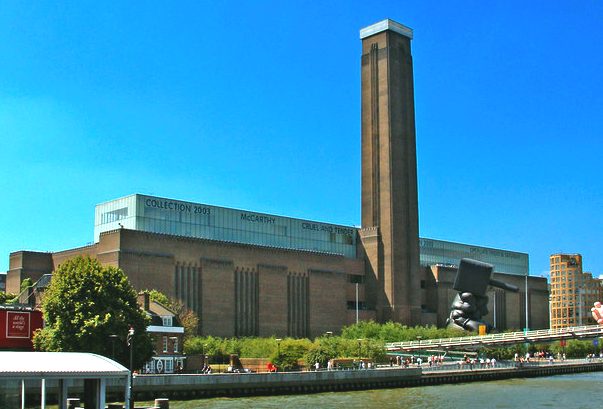
The
Tate Modern is as the name implies is a modern art gallery located in London. It is Britain's national gallery of international modern art and forms part of the Tate group (together with Tate Britain, Tate Liverpool, Tate St Ives and Tate Online). It is the most-visited modern art gallery in the world, with around 4.7 million visitors per year. It is based in the former Bankside
Power
Station, in the Bankside area of Central London. It is noted that
many old power stations seem to end their lives as galleries or museums.
Battersea Power Station is one such building for which a planning
solution is outstanding.
The
Tate holds the national collection of British art from 1500 to the present day and international modern and contemporary art.
The galleries are housed in the former Bankside Power Station, which was originally designed by Sir Giles Gilbert Scott, the architect of Battersea Power Station, and built in two stages between 1947 and 1963. The power station closed in 1981. The building was converted by architects Herzog & de Meuron and contractors Carillion, after which it stood at 99m tall. The history of the site as well as information about the conversion was the basis for a 2008 documentary Architects Herzog and de Meuron: Alchemy of Building & Tate Modern.
CONVERSION
For many years Bankside Power station was at great risk of being demolished by developers. Many people campaigned for the building to be saved and put forward suggestions for possible new uses. An application to list the building was refused.
By the spring of 1993 the building seemed doomed; contractors had already knocked a large hole in the side of the building and had started removing much of the redundant plant. The BBC television programme 'One Foot in the Past' focused on the impending threat to the building. The reporter, Gavin
Stamp, made an impassioned plea for the building to be saved.
In April 1994 the Tate Gallery announced that Bankside would be the home for the new Tate Modern. In July of the same year, an international competition was launched to select an architect for the new gallery. Jacques Herzog and Pierre de Meuron of Herzog & de Meuron were announced as the winning architects in January 1995.
The £134 million conversion to the Tate Modern started in June 1995 with the removal of the remaining redundant plant. The conversion was completed in January 2000. The most obvious external change is the blocky two-story glass extension on one half of the roof. Much of the internal structure remains, including the cavernous main turbine hall, which retains the overhead travelling crane. An electrical substation, taking up the southern third of the building, remained on-site and owned by the French power company
EDF
Energy. In 2006, EDF announced that they would be releasing half this holding to the museum, and the structure is being replaced by a tower extension to the museum, to be completed in 2015. It is being built over the old oil storage tanks, now converted to a performance art space.
Scott's other London power station is at Battersea and is widely considered a more iconic design, with its four towers - despite the fact his consultancy brief for Battersea was much more limited than his role as chief architect at Bankside. Battersea Power Station was proposed for the Tate Modern but, due to financial constraints and less dilapidation, the smaller Bankside building was chosen.
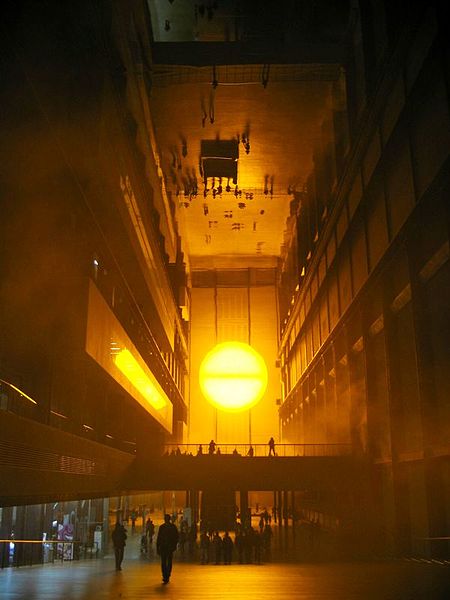
THE
GALLERIES
The collections in Tate Modern consist of works of international modern and contemporary art dating from 1900 until today.
Tate Modern currently has seven floors, originally numbered 1 to 7, they were renumbered 0 to 6 in 2012. Levels 0 to 4 contain gallery space.
Collection exhibitions
The main collection displays consist of 4 wings each taking up approximately half a complete floor of the main building. Each wing has a named theme or subject. Within each wing there are some rooms that change periodically showing different works in keeping with the overall theme or subject of the wing.
Previous collection exhibitions
When the gallery opened in 2000, the collections were not displayed in chronological order but were rather arranged thematically into four broad groups each allocated a wing on levels 3 and 5 (now levels 2 and 4):
* 'History/Memory/Society'
* 'Nude/Action/Body'
* 'Landscape/Matter/Environment'
* 'Still Life/Object/Real Life'
This was ostensibly because a chronological survey of the story of modern art along the lines of the Museum of Modern Art in New York would expose the large gaps in the collections, the result of the Tate's conservative acquisitions policy for the first half of the 20th century.
The first rehang at Tate Modern opened in May 2006. It eschewed the thematic groupings in favour of focusing on pivotal moments of twentieth-century art. It also introduced spaces for shorter exhibitions in between the wings. The layout was:
Material Gestures (now closed)
This focuses on abstraction, expressionism and abstract expressionism, featuring work by Claude Monet, Anish Kapoor, Barnett Newman, Mark Rothko, Henri Matisse and Tacita Dean.
Poetry and Dream
This features a large central room dedicated to Surrealism while the surrounding rooms feature works by artists influenced by Surrealism and its methods.
Energy and Process
This focuses on Arte Povera, with work by artists such as Alighiero Boetti, Jannis Kounellis, Kasimir Malevich, Ana Mendieta, Mario Merz and Jenny Holzer.
States of Flux (now closed)
This focuses on Cubism, Futurism, Vorticism and Pop Art,containing work by artists such as Pablo Picasso, Roy Lichtenstein, Andy Warhol and the photographer Eugène Atget.
CURRENT COLLECTIONS EXHIBITIONS
As of mid 2012, a third rehang is in progress. The current arrangement is:
Structure and Clarity
Focussing on abstract art, replacing States of Flux.
Transformed Visions
Focusing on Abstract Impressionism and related fields after the Second World War, replacing Material Gestures.
Setting the Scene
A smaller section, located between wings, covering installations with theatrical or fictional themes.
It has not been announced whether the current rehang will eventually replace all four of the sections introduced in the first
rehang.
TEMPORARY EXHIBITIONS
The Turbine Hall
Ólafur Elíasson, The Weather Project (2004)
Rachel Whiteread, EMBANKMENT (2005)
The Turbine Hall, which once housed the electricity generators of the old power station, is five storeys tall with 3,400 square metres of floorspace. It is used to display large specially-commissioned works by contemporary artists, between October and March each year. This series was planned to last the gallery's first five years, but the popularity of the series has led to its extension until at least 2012.
Until 2012, the series was named after its corporate sponsor, Unilever. Between 2000 and 2012, Unilever had provided £4.4m sponsorship in total including a renewal deal of £2.2m for a period of five years agreed in 2008. When the series is not running, the Turbine Hall is used for occasional events and exhibitions. Most recently it has been used to display Damien Hirst's For The Love Of God and a sell out show by Kraftwerk in February 2013 which famously crashed the ticket hotline and website causing a backlash from the band's fans.
Major temporary exhibitions
Two wings of the main building are used to stage the major temporary exhibitions for which an entry fee is charged. These exhibitions normally run for three or four months. When they were located on a single floor, the two exhibition areas could be combined to host a single exhibition. This was done for the Gilbert and George retrospective due to the size and number of the works. Currently the two wings used are on levels 2 and 3. It is not known if this arrangement is permanent. Each major exhibition has a dedicated mini-shop selling books and merchandise relevant to the exhibition.
The Tanks
The Tanks, located on level 0, are three large underground oil tanks, connecting spaces and side rooms originally used by the power station and refurbished for use by the gallery. One tank is used to display installation and video art specially commissioned for the space while smaller areas are used to show installation and video art from the collection.
Project Space
The Project Space (formerly known as the Level 2 Gallery) is a smaller gallery located on the north side of the building on level 1 which houses exhibitions of contemporary art in collaboration with other international art organisations. Its exhibitions typically run for 2–3 months and then travel to the collaborating institution for display there.
Other areas
Small exhibition spaces can be created between the wings on levels 2 to 4. These have been used used to display recent acquisitions and other temporary displays from the collection. Works are also sometimes shown in the restaurants and members' room. Other locations that have been used in the past include the mezzanine on Level 1 and the north facing exterior of the building.
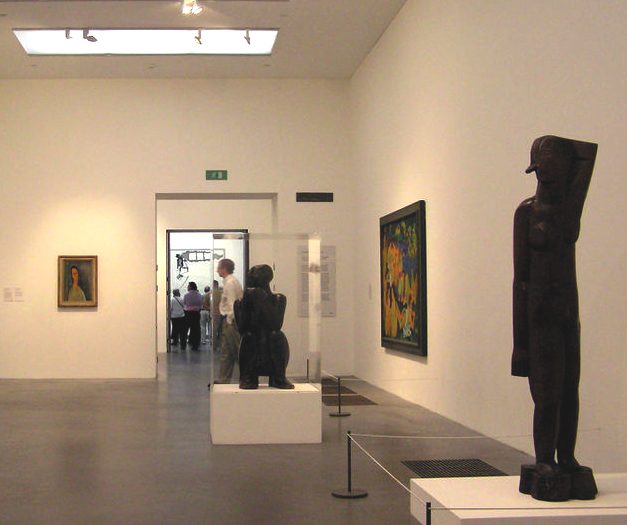
CHARITABLE
STATUS
Tate is an exempt charity under the Charities Act 1993. As set out in the Charities Act 1993,
the Tate Modern has full charitable status in the UK.
Their
mission is to increase public understanding and enjoyment of art, raising funds through sponsorship, donations and legacies to support a wide range of educational and artistic programmes across the UK.
However, through the Museums and Galleries Act 1992 and as described in the Charities Act 1993,
the Tate is an exempt charity and is therefore regulated by statute and by the Department for Culture, Media and Sport (DCMS), not the Charity Commission.
This means that:
* Tate is not a registered charity and does not have a registered charity number
* Neither Inheritance Tax nor Capital Gains Tax are charged on gifts to Tate
* Tate is able to receive Gift Aid in relation to any gifts or donations offered.
While not directly regulated by the Charity Commission, exempt charities like Tate can ask the Charity Commission to use some powers the Commission has over all charities.
For example, in a case of potential Trustee benefit (where a Trustee may benefit directly or indirectly from Tate)
they might consult the Charity Commission to ensure the matter is handled appropriately and transparently. In certain cases, the Commission may provide
an ‘Order’ which grants us specific legal powers.
Connected charities
Tate also has three connected charities: Tate Members (registered Charity number 313021), the Tate Foundation (registered Charity number 1085314) and the American Patrons of Tate Trustees.
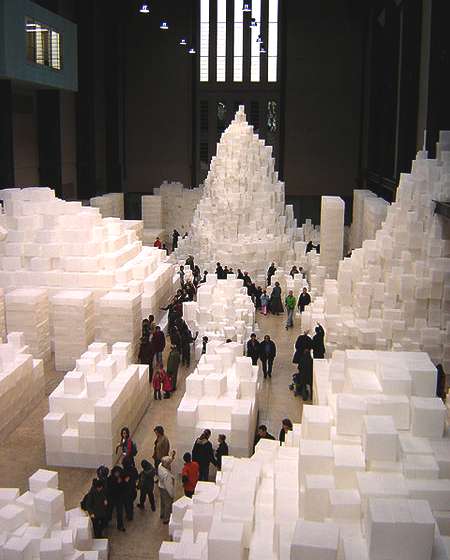
CONTACTS
Email:
ticketing@tate.org.uk
Phone: +44 (0)20 7887 8888 (Monday–Friday, 10.00–17.00)
Textphone: +44 (0)20 7887 8687
Membership and ticketing services 9.45–18.00 daily
Email: visiting.britain&modern@tate.org.uk
Tate Modern
Bankside
London SE1 9TG
United Kingdom
LINKS
http://www.tate.org.uk/visit/tate-modern/contact
http://www.tate.org.uk/homepage
http://www.tate.org.uk/art
http://www.tate.org.uk/whats-on
http://www.tate.org.uk/research
http://shop.tate.org.uk/
http://www.tate.org.uk/about/who-we-are/charitable-status
Video
interview with the artist on Tate Online
Interview
with young people on the Tate website
http://www.legislation.gov.uk/ukpga/1992/44/contents
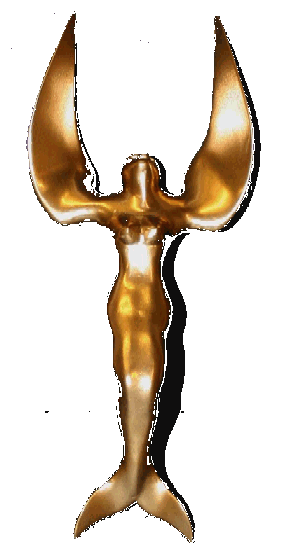
|




